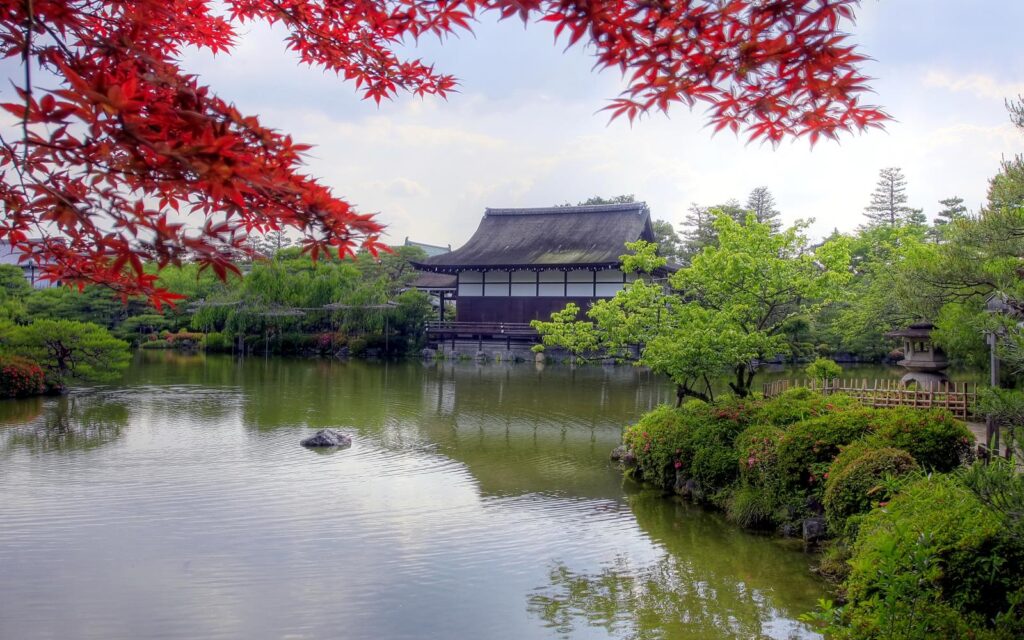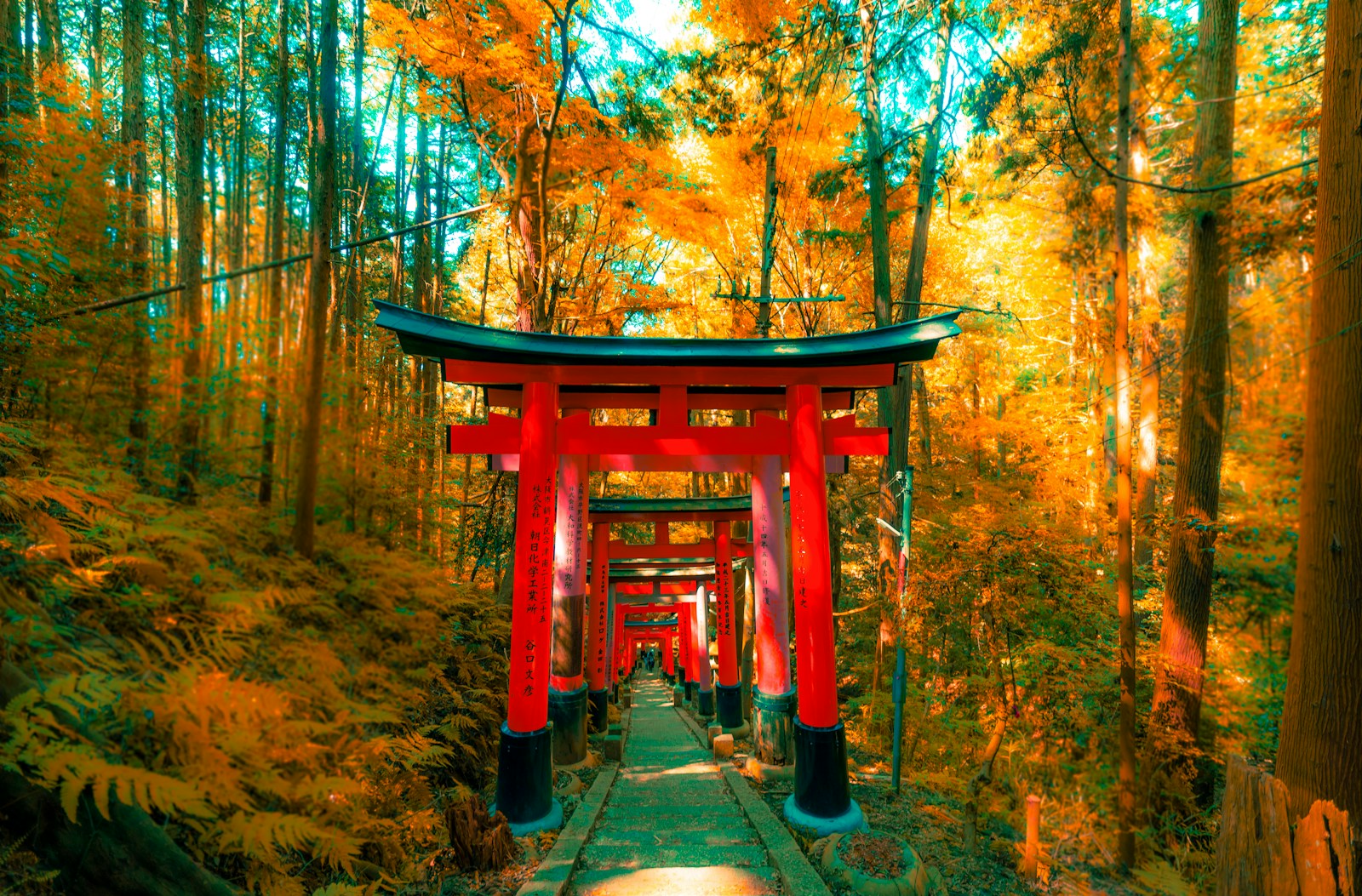A Culture Gem Heian Shrine Kyoto
The Heian Shrine Kyoto, or Heian Jingu, is one of Kyoto’s most iconic and culturally significant landmarks. Built in 1895 to commemorate the 1100th anniversary of Kyoto’s founding, the shrine is a tribute to the first and last emperors who reigned from the ancient capital. Its grand architecture, lush gardens, and historical importance make it a must-visit for anyone exploring Kyoto.

Table of Contents
My personal connection to the Heian Shrine stems from numerous visits over the years, each one deepening my appreciation for its beauty and cultural significance. Walking through its expansive grounds, I’ve felt a profound connection to Kyoto’s rich history and the enduring spirit of its people. Understanding the cultural and historical context of the Heian Shrine enriches the visitor experience, allowing for a more meaningful engagement with this cultural gem.
Historical Background of the Heian Shrine
Origins and Construction
The Heian Shrine was founded in 1895 to mark the 1100th anniversary of Kyoto’s establishment as Japan’s capital. It was constructed to honor Emperor Kanmu, who moved the capital to Heian-kyo (modern-day Kyoto) in 794, and Emperor Komei, the last emperor to reside in Kyoto before the capital moved to Tokyo. The shrine’s construction was part of a broader effort to preserve Kyoto’s cultural heritage amid modernization.
The architectural design of the Heian Shrine is a scaled-down replica of the original Heian Palace, reflecting the architectural style of the Heian period (794-1185). The shrine’s vibrant vermilion buildings and intricate woodwork are inspired by the ancient palace, offering visitors a glimpse into the grandeur of Kyoto’s historical architecture. The use of traditional construction techniques ensures the shrine’s authenticity and historical integrity.
Cultural Significance
Throughout its history, the Heian Shrine has hosted numerous significant events and ceremonies, playing a vital role in Kyoto’s cultural life. Key events include the annual Jidai Matsuri (Festival of the Ages), which celebrates Kyoto’s rich history through elaborate parades and reenactments. The shrine also serves as a focal point for various seasonal festivals and religious ceremonies, drawing both locals and tourists.
Preservation and restoration efforts have been crucial in maintaining the Heian Shrine’s splendor. Over the years, various projects have been undertaken to restore the shrine’s buildings and gardens, ensuring they remain true to their historical roots. These efforts reflect a deep commitment to preserving Kyoto’s cultural heritage for future generations to appreciate and enjoy.
Exploring the Heian Shrine Grounds
The Main Hall (Daigokuden)
The main hall, or Daigokuden, is the heart of the Heian Shrine and a stunning example of traditional Japanese architecture. Its grand scale and intricate design elements, such as the sweeping tiled roofs and ornate woodwork, make it a focal point of the shrine. The hall’s vibrant colors and harmonious proportions exemplify the aesthetic principles of the Heian period.
Religiously, the Daigokuden plays a central role in the shrine’s ceremonies and rituals. It is here that offerings are made to the enshrined deities, and various religious festivals are conducted. The hall’s serene ambiance and spiritual significance make it a place of contemplation and reverence for visitors.
The Shrine Gardens
The gardens of the Heian Shrine are a masterpiece of landscape design, showcasing the beauty of each season. In spring, cherry blossoms create a breathtaking scene, while autumn brings a tapestry of vibrant fall colors. The gardens are meticulously maintained, featuring a variety of plantings that ensure year-round beauty.
Notable elements within the gardens include serene ponds, arched bridges, and winding pathways that invite leisurely exploration. The combination of water features and lush greenery creates a tranquil environment, perfect for relaxation and reflection. Each section of the garden offers a different perspective, making every visit unique.
Notable Structures within the Heian Shrine
The Great Torii Gate
The Great Torii Gate at the entrance of the Heian Shrine is one of the largest in Japan, standing at an impressive 24 meters tall. This iconic structure serves as a grand gateway, symbolizing the transition from the secular world to the sacred space of the shrine. The vermilion color of the torii contrasts beautifully with the surrounding greenery, creating a striking visual impact.
Photographic tips for capturing the Great Torii Gate include visiting during early morning or late afternoon when the light is soft and golden. This timing enhances the gate’s vivid colors and provides excellent opportunities for capturing dramatic shadows and reflections.
The Soryu-ro Towers
The Soryu-ro Towers flank the main hall and are significant for their architectural beauty and historical context. These towers, with their elegant design and intricate details, add to the overall grandeur of the shrine. They serve both as decorative elements and as important components of the shrine’s layout.
Visitors should take the time to appreciate the towers’ craftsmanship and the historical narratives they embody. The towers offer unique vantage points for viewing the shrine grounds, providing perspectives that highlight the harmonious integration of architecture and nature.
Cultural Events and Festivals
Jidai Matsuri (Festival of the Ages)
The Jidai Matsuri is one of Kyoto’s most celebrated festivals, held annually on October 22nd. This vibrant event features a grand parade that reenacts various historical periods, from the Heian era to the Meiji Restoration. Participants don elaborate costumes representing historical figures, creating a living tableau of Kyoto’s rich history.
Key events during the festival include traditional music and dance performances, as well as various displays of cultural artifacts. The Jidai Matsuri offers a unique opportunity to experience Kyoto’s history in a lively and engaging way, making it a highlight of the Heian Shrine’s annual calendar.
Seasonal Ceremonies
The Heian Shrine also hosts a variety of seasonal ceremonies that reflect traditional Japanese practices. New Year celebrations at the shrine include rituals for good fortune and prosperity, drawing large crowds who come to pray and participate in the festivities. The shrine’s tranquil setting provides a peaceful start to the new year.
Cherry blossom viewing at the Heian Shrine is another special event, with the gardens offering a stunning display of sakura in full bloom. Special events during this season include evening illuminations and cultural performances, enhancing the beauty of the cherry blossoms and creating a magical atmosphere.
Personal Reflections on the Heian Shrine
Memorable Visits
Each visit to the Heian Shrine has been a unique and memorable experience. One particular highlight was attending the Jidai Matsuri, where the vibrant costumes and historical reenactments brought Kyoto’s past to life in an unforgettable way. Another memorable moment was witnessing the cherry blossoms in full bloom, their delicate petals creating a sea of pink that contrasted beautifully with the shrine’s vermilion structures.
Lessons learned from these visits include the importance of timing and preparation. Visiting during off-peak hours or participating in special events can enhance the experience and provide deeper insights into the shrine’s cultural significance. Each visit offers new perspectives and a deeper appreciation for Kyoto’s rich heritage.
Connecting with Culture
The Heian Shrine offers a profound connection to Japanese culture and history. Its architectural beauty, serene gardens, and cultural events provide a multifaceted experience that enriches one’s understanding of Kyoto’s heritage. The shrine’s ability to blend historical preservation with living traditions makes it a unique cultural gem.
Recommendations for visitors include taking the time to explore the entire shrine grounds and participating in seasonal events to fully appreciate the shrine’s offerings. Engaging with the shrine’s history and cultural significance can deepen one’s connection to Kyoto and its enduring traditions.
Heian Shrine Kyoto – Conclusion
The Heian Shrine stands as a testament to Kyoto’s rich cultural and historical legacy. Its grand architecture, serene gardens, and vibrant cultural events offer visitors a comprehensive and immersive experience. Exploring the Heian Shrine provides a deeper understanding of Kyoto’s heritage and the enduring beauty of its traditions. I encourage everyone to visit and explore this cultural gem, and to share their own experiences and reflections, enriching the collective appreciation of Kyoto’s historical treasures.

